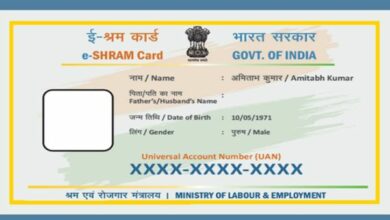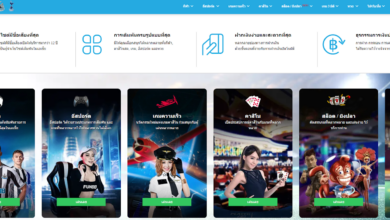Content creation has exploded into a billion-dollar industry in the past few years. The online world has become flooded with people who create content for a living, so how do they do it? What is the secret to their success? Content creator business models are the answer.
Professional artists, prolific bloggers, video creators, and social media influencers alike use the same tactics to engage their target audience with high-quality content, hoping to land exclusive brand deals we have all heard about.
The content creation industry used to be elusive and almost impossible to break down. This article will cover all the tools and tactics social influencers have used to get excellent results from their content.
Keep reading if you want to know what goes on behind the scenes when someone creates content.
The Most Effective Content Creator Business Models for Social Media
When building an effective content creator business model, you must first implement the right strategies. Below, we will list the 6 main strategies influences use to build their following and grow their accounts.
1. Running Ads
Running ads and partnering with brands who want to advertise on your platform is a great way to make money, and big YouTube stars do this every day. Of course, most bigger channels have a marketing team that utilizes things such as an influencer marketing software platform or money calculator tool to see how much revenue is generated from ads.
Even smaller channels and content creators can access these same tools to make running ads a lot easier, as well as keep track of how much revenue they generate.
2. Subscription Services
Subscription services have taken over the market, and influencers have built a considerable creator economy. You could offer many different types of subscriptions, such as online courses, types of digital content like photographs, and so on.
If you decide to sell a service such as a course, it’s a great way to receive customer advocates. While there are sites you can use to host your subscription, having your own website means that you can control the social commerce features.
3. Brand Partnerships
We finally reached the best part: brand sponsorships! We’ve all heard about the massive amount of money brands pay influencers, so it’s no surprise that everyone wants a piece of the pie. It’s not as straightforward as it sounds, though; in order for you to become a brand ambassador, there are quite a few things that these brands expect from you.
The brand-content creator relationship is complex. As an influencer, brands will usually ask you to make a branded post or two, maybe record video content to drive up ad revenue, as well as be a part of their particular influencer program. You also have to be careful because if you accept endorsement deals, you might not be allowed to work with other brands.
Posting sponsored content can also look bad to your followers if not done in a tasteful way. Most influencers these days clearly mark their post as an ad to avoid losing followers. Although landing a brand deal is not as easy as we make it out here, most influencers rely on their marketing teams to land them brand endorsements.
4. Selling Merchandise
As old as this business model is, it is still one of the most effective. Selling your own merchandise is influencer marketing 101. It allows creators to sell their products directly to consumers, which is a great way to build a strong relationship. You get to launch on your own schedules and be in control of all the in-app shopping. You must be involved in the whole process, making sure that everything runs flawlessly.
5. Affiliate Marketing
Once content creators have established a personal brand, production companies reach out to businesses interested in selling their products on influencer platforms. This is commonly referred to as affiliate marketing.
Of course, the company must find eligible creators that fit the business’s image and voice. As a marketplace model, it is an older marketing funnel that is still quite effective today. Most influencer marketers bridge the gap between influencer and business to make this happen.
6. Donations & Tips
Donations and tips are another great content creator business model, especially for those who don’t quite have the backing yet. Content creators, business people, and independent influencers alike use this model when they have ideas but not enough funds to bring them to life. If you look at other creators’ profiles, you will usually find a link to a website such as GoFundMe so people can give them donations for particular projects.
Content Creator Economy Statistics
Content creation has no doubt become a booming industry that has increased to 21 billion in 2023. An influencer’s average amount is around 50,000 dollars annually if they use multiple revenue streams. Key opinion leaders think almost anyone can do it with the right marketing strategy and a suitable business model.
Not only has being an influencer become the dream of many, but being in the influencer and content marketing industries has also grown in interest. How the content creator economy works is really too complex to go over, but it is a huge beast that is continuously growing every day.
Most Effective Social Media Platforms for Content Creators
Independent creators have reached global success by using these platforms when it comes to content creation. You should keep in mind that most content creators have multiple platforms that generate various revenue streams, so you should probably do the same.
Instagram is one of the most popular platforms for content creators. While other platforms have also become popular, none have knocked Instagram off the number one spot. It’s still one of the most used digital platforms for influencers because it always offers new features that support creators in making their content.
TikTok
TikTok, another big platform on this list, has taken the world by storm. TikTok has over 1 billion active content creators post user-generated content monthly. It has created a content creator economy that businesses and regular content creators take full advantage of. On TikTok, you can always search for what’s trending to ensure your content quality is up to speed.
Twitter (Now Known as X)
Twitter, or X as it is now known, is still a favorite among content creators. It’s a great way to put your thoughts out there for the world to see, as well as build direct relationships with fans or brands. There is even influencer marketing automation technology now available that posts a steady stream of tweets for you, allowing creators to be hands-free when it comes to posting social media posts to their platforms. It’s also a great way to tell your followers about exclusive content they can find on your other platforms.
Facebook is still one of the most used platforms but seems to be dwindling in popularity these last few years. It still has some great features like event planning and invites and private groups that some influencers use. Most active Facebook users fall into a slightly older range depending on your audience demographics.
YouTube
YouTube, the video content community builder, has revolutionized video content for creators and those watching at home. YouTube is an absolute must when it comes to content creator business models. The most successful content creators use YouTube and generate a great amount of money off ad revenue alone.
FAQs
Is a sustainable process important when it comes to the creator economy?
Yes, when it comes to creator economy startups, having a viable process fosters a healthy ecosystem.
Do I need a content management team, or can I manage content on my own?
Regardless of whether they have a team, content creators usually plan ahead on how to host content by planning a calendar a few months ahead.

 How to Generate your E-Shram Card? Apply Online
How to Generate your E-Shram Card? Apply Online The Impact of Advanced SEO Techniques on Online Visibility
The Impact of Advanced SEO Techniques on Online Visibility Emirates Multi-City Flights Are Cheaper or Not?
Emirates Multi-City Flights Are Cheaper or Not? What Makes FamiSafe A Perfect Choice For Your Child Safety
What Makes FamiSafe A Perfect Choice For Your Child Safety How Technology is Changing Long-Distance Moving
How Technology is Changing Long-Distance Moving The Role of Certifiers in Commercial Development
The Role of Certifiers in Commercial Development Fun88 รีวิวเว็บคาสิโนออนไลน์ ใบอนุญาต ฟีเจอร์เด่น พร้อมแชร์ทางเข้า Fun88แท้ อัพเดทใหม่
Fun88 รีวิวเว็บคาสิโนออนไลน์ ใบอนุญาต ฟีเจอร์เด่น พร้อมแชร์ทางเข้า Fun88แท้ อัพเดทใหม่ Everything You Need To Know About The Champions League Final
Everything You Need To Know About The Champions League Final